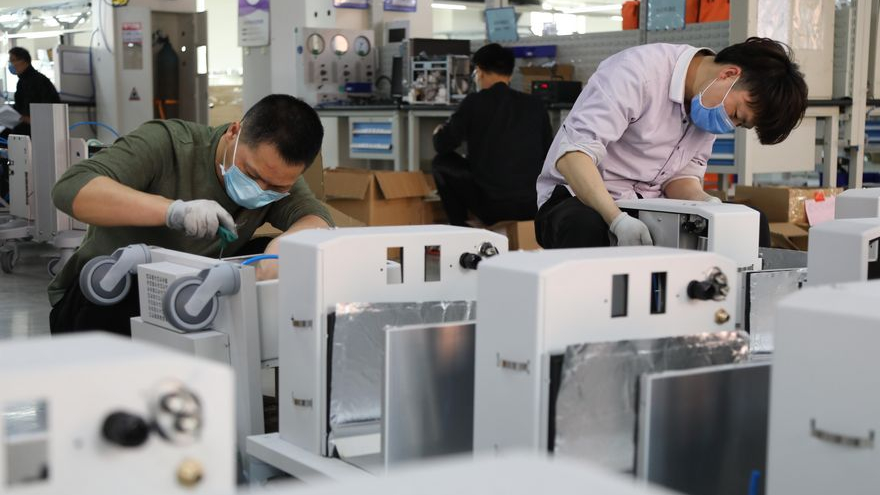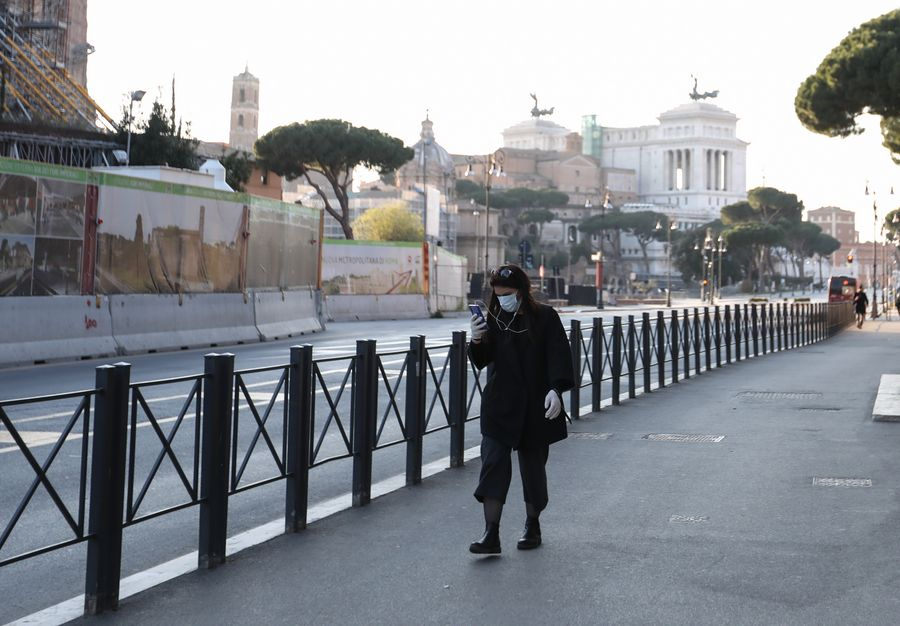
Employees assemble ventilators at a plant of Beijing Aeonmed Co., LTD., an anesthesia and respiratory medical equipment enterprise, in Yanjiao, a town of north China's Hebei Province, March 25, 2020. /Xinhua
Employees assemble ventilators at a plant of Beijing Aeonmed Co., LTD., an anesthesia and respiratory medical equipment enterprise, in Yanjiao, a town of north China's Hebei Province, March 25, 2020. /Xinhua
Editor's note: Shahid Hussain is the founder and CEO of UAE-based company Green Proposition. The article reflects the author's opinions and not necessarily the views of CGTN.
Every minute, four people are dying because of coronavirus as global death toll crossed hundred thousand marks with more than 1,909,418 active cases.
Despite knowing about the outbreak as early as January, most countries were slow in taking preventive measures resulting in acute shortage of personal protective equipment (PPE) and ventilators.
From masks to ventilators – gears used in normal to critical conditions of COVID-19 are not adequately available and conditions are too dire in some countries that let alone general public but medical staff are dying and getting infected due to shortage of PPE (protective suits, goggles, gloves and masks).
Italy and Spain, the hotbeds of Europe, have reported nearly 38,000 deaths with more than 320,000 infections have sadly high percentage of infections reported in medical staffs and many succumbed to death.
New York, the financial capital of the world's most powerful country is hit by both the pandemic and economic fallout because of the lockdown.
The mayor demanded 30,000 ventilators from the federal government which had a capacity of 7,000; the UK also needs 30,000 which has less than 30 percent only and India with its 1.2 billion population needs at least 110,000 which is six times more than current numbers.
To meet the demand, U.S. President Donald Trump invoked much needed Defense Production Act to accelerate the manufacturing of ventilators and big shots like GM , Ford and Tesla have put their hat in the ring to meet the demands, similarly UK and India have asked their automobile companies to kickstart productions.

A street in Rome, Italy, March 16, 2020. /Xinhua
A street in Rome, Italy, March 16, 2020. /Xinhua
Ventilators take over the respiratory system in patients with serious breathing problems. As lungs and throat of critical COVID-19 patients get severely infected, ventilators buy them time to fight the infection. But hospitals do not have the capacity to meet the exponential rate of infections. Hence in some places, doctors are making tough decisions to choose patients with high probability of survival to be put on ventilators, which means leaving others to die untreated.
Ventilators are complex machines that are made of sophisticated parts and operates on advance software. It's not easy to switch from car manufacturing as streamlining the supply chain and technical know-how will require rebooting time, which means the adequate supply to meet the current demand will take time and hence more lives will be lost.
Amid all these, some companies are coming forward with innovative solutions to meet the demand. A company in India, which manufacture ventilators of toaster size, is ramping its production from 500 to 20,000 monthly.
Similarly, others are coming with ideas of making less complex ventilators by producing parts with 3D printers therefore effectively controlling the supply chain and lowering the cost of productions.
In spite of World Health Organization's (WHO) early warning of high demand, panic buying and hoarding of medical supply and advice to ramp up the production rate by 40 percent to fight pandemic, it seems nobody except countries like China and South Korea took the WHO seriously. In the U.S., medical staff are protesting against the Federal Government because they are not able to supply the much needed safety gears.
India, knowing it can't meet the demand of masks, has issued an advisory asking citizens to make their own masks from household items and only time will tell their effectiveness.
It's optimistic that car and tech industries are trying to contribute to minimized the damages by coming up with innovative ideas for ventilators and PPE, but their success would depend upon the lockdown and social distancing measures to flatten the curve but those factors mean slower production rate.
Therefore, governments need to strike a balance between prevention and production to fight the pandemic.
(If you want to contribute and have specific expertise, please contact us at opinions@cgtn.com.)